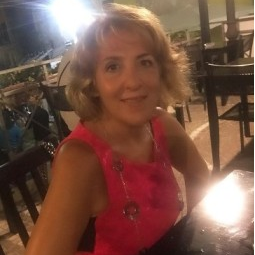Membrane Systems for Tissue Engineering 2020
A special issue of Membranes (ISSN 2077-0375). This special issue belongs to the section "Membrane Applications".
Deadline for manuscript submissions: closed (31 October 2020) | Viewed by 38285
Special Issue Editors
Interests: polymeric membrane systems for tissue engineering; regenerative medicine and bioartificial organs; 3D membrane-based tissue models for tissue repair; pharmacological screening; and disease modeling; membrane bioreactors
Special Issues, Collections and Topics in MDPI journals
Interests: bioabsorbable medical devices; drug delivery; tissue engineering; nanofibers; core-shell microspheres
Special Issues, Collections and Topics in MDPI journals
Interests: design of micro- and nano-structured membranes; bioengineering of membrane bioreactors, bioartificial organs/tissues; membrane interfacial properties; tissue engineering; in vitro membrane platform
Special Issues, Collections and Topics in MDPI journals
Special Issue Information
Dear Colleagues,
Currently, in the field of tissue engineering, membrane-based approaches provide advanced systems that are able to mimic the native physiological environment of healthy tissues and, consequently, regulate cell behavior and support the regeneration of injured tissues/organs. A variety of membrane systems, including micro/nanofibers and scaffolds made of natural, synthetic or blend polymers, and bioreactors, have been widely investigated for engineering a range of tissues (i.e., liver, kidney, bone, nerve, skin, etc.).
For the design and fabrication of advanced tissue-engineered constructs, membrane properties including morphological, mechanical, physico-chemical, and transport and electrical properties, are key elements in dictating cellular behavior and in controlling new tissue formation. In this context, a challenging issue is to provide biofunctionality—mechanical and topographical features of the native target tissue within the membrane system to improve interactions with cells for greater repair and regeneration.
To date, membrane-based systems also have great potential as investigational tools in preclinical research, contributing to expand the available in vitro devices for drug testing applications and modeling of human disease. Therefore, membrane systems offer a broad range of applications in the field of tissue engineering.
This Special Issue aims to cover the latest developments and innovations regarding the multifunctional role of membrane systems for tissue engineering applications. Potential topics include, but are not limited to, the following:
- Advanced approaches in membrane synthesis and characterization;
- Functionalization procedures of membranes;
- Membrane bioreactors;
- Bioartificial organs;
- Cell–membrane interactions;
- Bioabsorbable materials;
- Micro/nano fabrication methods;
- Membranes for cell/drug delivery;
- In vitro membrane platforms for disease modeling/drug screening;
- Biosensors;
- Bioprinting methods;
- Microfluidic systems.
Authors are invited to submit their latest results; both original papers and reviews are welcome.
Dr. Sabrina Morelli
Prof. Dr. Shih-Jung (Sean) Liu
Dr. Loredana De Bartolo
Guest Editors
Manuscript Submission Information
Manuscripts should be submitted online at www.mdpi.com by registering and logging in to this website. Once you are registered, click here to go to the submission form. Manuscripts can be submitted until the deadline. All submissions that pass pre-check are peer-reviewed. Accepted papers will be published continuously in the journal (as soon as accepted) and will be listed together on the special issue website. Research articles, review articles as well as short communications are invited. For planned papers, a title and short abstract (about 100 words) can be sent to the Editorial Office for announcement on this website.
Submitted manuscripts should not have been published previously, nor be under consideration for publication elsewhere (except conference proceedings papers). All manuscripts are thoroughly refereed through a single-blind peer-review process. A guide for authors and other relevant information for submission of manuscripts is available on the Instructions for Authors page. Membranes is an international peer-reviewed open access monthly journal published by MDPI.
Please visit the Instructions for Authors page before submitting a manuscript. The Article Processing Charge (APC) for publication in this open access journal is 2700 CHF (Swiss Francs). Submitted papers should be well formatted and use good English. Authors may use MDPI's English editing service prior to publication or during author revisions.
Keywords
- Instructive membranes
- Tissue engineering
- Membrane bioreactors
- Bioartificial organs
- Membrane properties
- Mass transfer
- Implantable membranes
- Cell–membrane interactions








